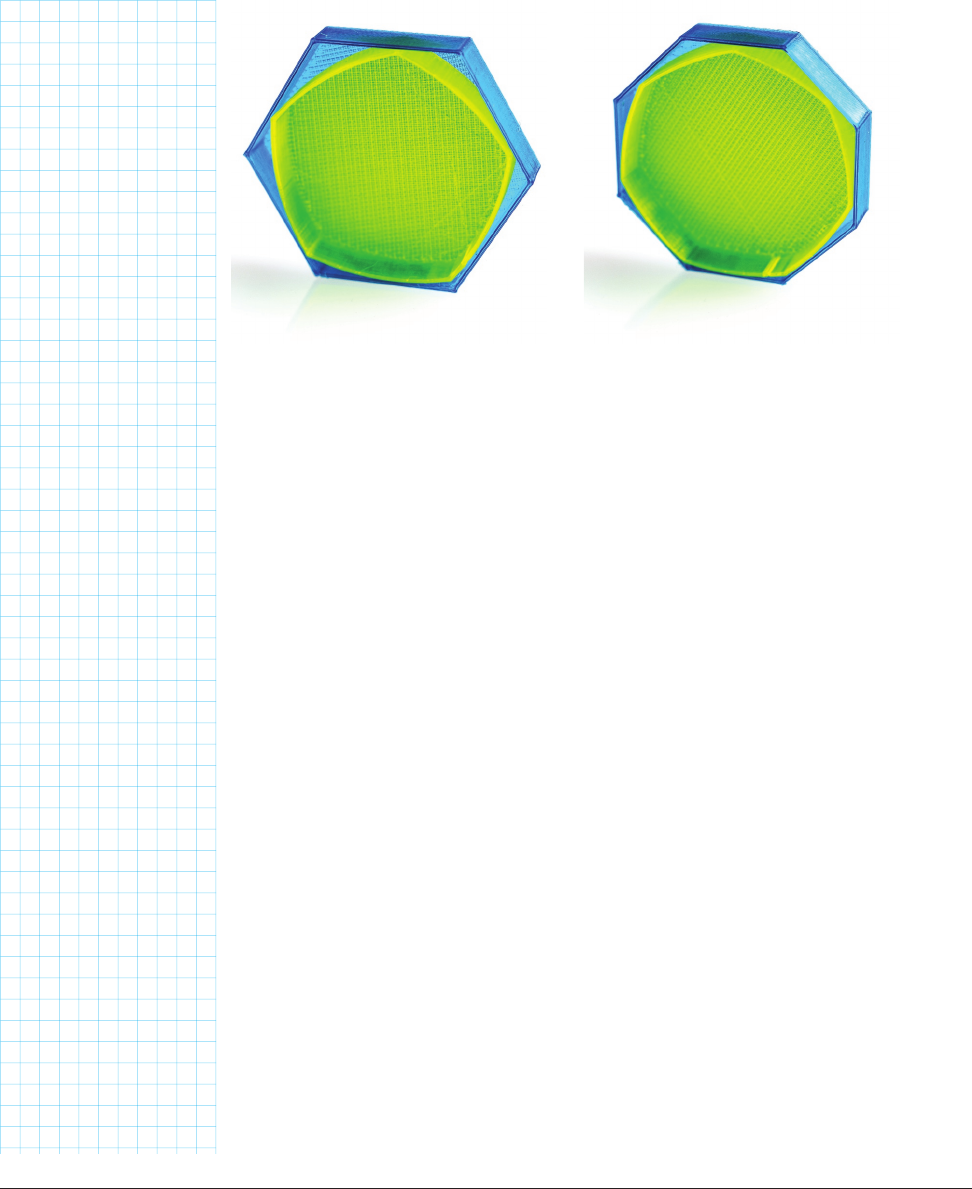
Similar features show up more often than you might think, some of them
long before Reuleaux analyzed them. In Chapter 13, we will see how Gothic
arches in medieval cathedrals relate to Reuleaux triangles, and con-
struct 3D printable outlines of cathedral window designs by using related
constructions.
OTHER REULEAUX POLYGONS
The 3D printed model provides both a Reuleaux shape of varying numbers of
sides (change the variable “sides” to an odd number) and an enclosure which
is approximately the shape they make when they are turned in place. Print
out several and turn the Reuleaux shape around to see! Here you can see
what a 5-gon (Figure 4-24), and a 7-gon (Figure 4-25) look like.
Constant-radius shapes are pretty handy because they can fit into machinery
well, like coin machines. In fact, the British 20p and 50p coins are Reuleaux
7-gons (Figure 4-26). Using different shapes makes it easier to distinguish
one coin from another. It is true for all odd-sided Reuleaux polygons that
they make a hole with one more side. Even-numbered Reuleaux polygons
don’t exist, since you need to have an arc of a circle opposite each vertex to
have the constant-distance construction work out
In Chapter 13, we’ll also introduce you to the Reuleaux tetrahedron and its
cousins the Meissner tetrahedrons. These are 3D versions with their own
strange properties.
FIGURE 424: A Reuleaux 5-gon. FIGURE 425: A Reuleaux 7-gon.
72 Chapter 4: Constructions Make: Geometry 73
Geometry_Chapter10_v15.indd 72Geometry_Chapter10_v15.indd 72 6/23/2021 9:09:10 AM6/23/2021 9:09:10 AM

SUMMARY AND LEARNING MORE
If you enjoyed the constructions, we recommend searching for a copy of Euclid’s Elements and seeing
how much they knew 2500 years ago. You also might look at the Wikipedia entries for “straightedge
and compass construction.” If learning from a book isn’t your thing, there are now many websites and
games that simulate the process of doing geometric constructions. We already mentioned Euclidea
(www.euclidea.xyz) which is more of a game than a course. There are also more traditional explana-
tory sites, like GeoGebra (www.geogebra.org).
There are many places you can go from here. In Chapter 13 we will see how the constructions of circles
and Reuleaux triangles can be used to draw elements of Gothic (and later) architecture. Meanwhile, the
next three chapters will introduce you to two-dimensional shapes, starting with triangles in Chapter 5,
and we’ll fill in some of the properties of the shapes you’ve just been constructing.
ANSWERS
EQUILATERAL TRIANGLE CONSTRUCTION
In Figure 4-21, we showed the construction of a central equilateral triangle, shown in blue in Figure
4-27. There are also three more “outer” triangles, spaced evenly around the first one. These outer trian-
gles have one blue side and two red ones.
All four equilateral triangles together form a larger (red) equilateral triangle. (Figure 4-27). Since all four
of these smaller triangles are equal, we know that the length of each side must be exactly twice that of
the smaller triangles. So the ratio of the size of the “inner” (blue) and “outer” (red) triangle is 1:2.
FIGURE 426: British coins that are Reuleaux 7-gons FIGURE 427: The other equilateral triangles that can be
constructed
Make: Geometry 73
Geometry_Chapter10_v15.indd 73Geometry_Chapter10_v15.indd 73 6/23/2021 9:09:11 AM6/23/2021 9:09:11 AM
..................Content has been hidden....................
You can't read the all page of ebook, please click here login for view all page.
